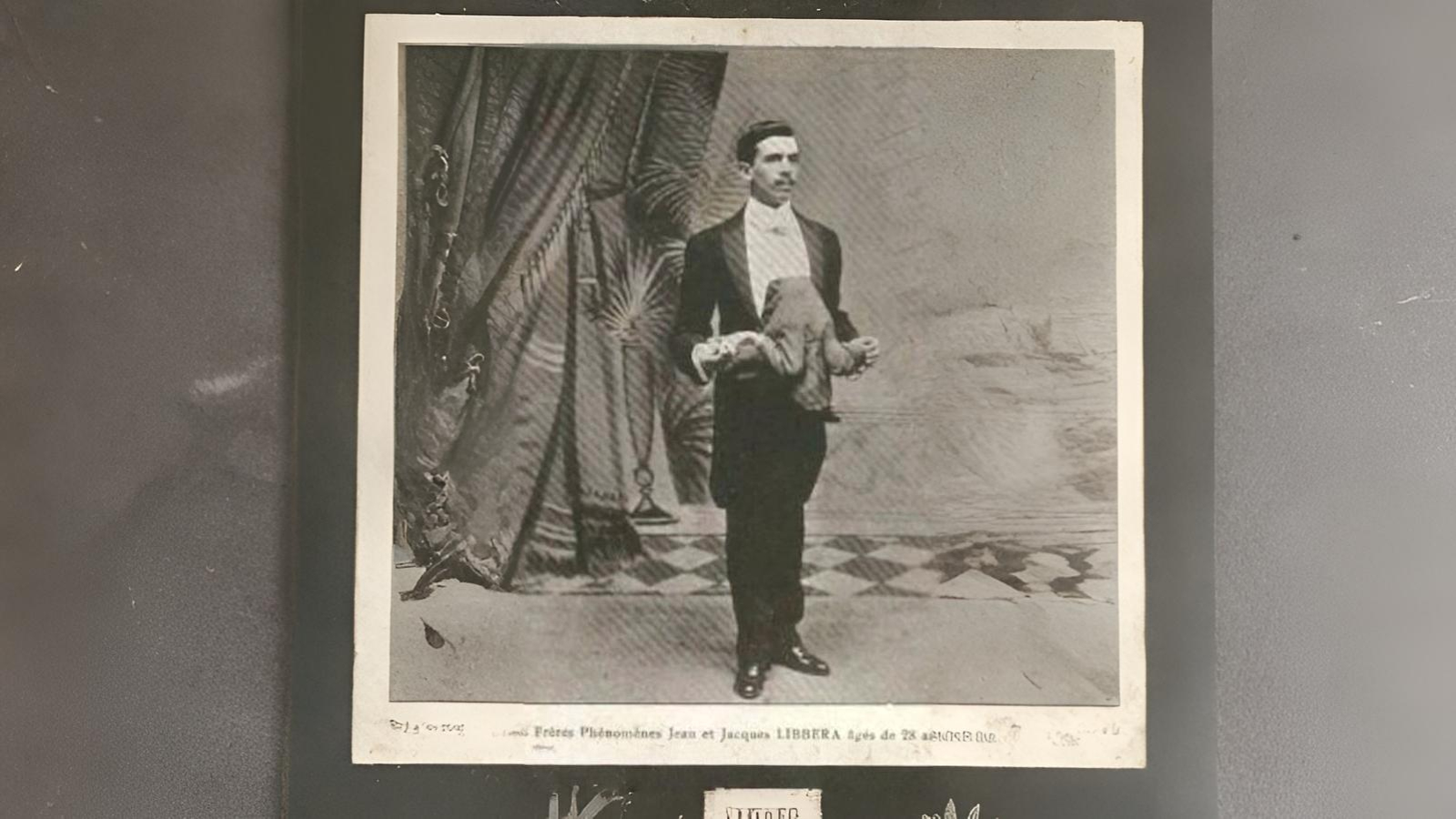Jean Libbera was a famous sideshow performer known for his unique physical condition. He gained recognition for being a parasitic twin performer, which made him a fascinating figure in the world of entertainment. His condition, often called “parasitic twin syndrome,” meant that he had an underdeveloped twin attached to his body. This rare condition set him apart from other performers of his time.
Early Life and Background
Jean Libbera was born in the late 19th century. His birth was considered remarkable due to his rare condition. In a time when medical advancements were still developing, such cases were not well understood. However, Jean’s physical condition did not stop him from leading a life filled with curiosity and determination.
Growing up, Jean experienced both fascination and fear from people who saw him. His family supported him, but his appearance made him stand out in his community. He was a bright and determined child who wanted to make the best of his circumstances.
What Is a Parasitic Twin?
A parasitic twin is a rare medical condition where one twin develops incompletely and remains physically attached to the other. Unlike conjoined twins, where both twins are fully developed but connected, a parasitic twin is not a complete individual. Instead, the underdeveloped twin depends entirely on the other for survival.
Jean Libbera’s case was one of the most well-known examples of this condition. He had an extra limb and other body parts attached to his torso, which amazed doctors and scientists of the time. His condition drew attention from both the medical community and the entertainment industry.
Becoming a Sideshow Performer
Jean Libbera’s journey into the world of sideshow performances began when he was a young man. During the late 19th and early 20th centuries, sideshows and traveling circuses were popular forms of entertainment. People were fascinated by unusual physical conditions, and Jean became a natural attraction.
He started performing in sideshows, where he showcased his unique body to curious audiences. His performances were not just about displaying his condition; he also engaged with the crowd, educating them about his rare medical condition. This made him stand out among other performers.
Public Reactions and Fame
Jean Libbera quickly gained popularity in the world of sideshows. People traveled from different parts of the world to see him. His performances were met with a mixture of amazement, curiosity, and sometimes disbelief. Many people had never seen such a condition before, and his presence challenged their understanding of human biology.
Despite the curiosity, Jean was treated with respect by many who admired his courage. He was not just a performer but also an individual who embraced his uniqueness. His ability to handle public attention with grace made him even more respected in the entertainment industry.
Medical Interest in His Condition
Doctors and scientists showed great interest in Jean Libbera’s condition. During his time, medical knowledge about parasitic twins was limited. His case provided doctors with valuable insights into how such conditions developed and how they affected human anatomy.
Medical professionals studied Jean’s body and wrote about him in medical journals. His case contributed to the understanding of parasitic twins, paving the way for further research into similar conditions. Even today, his case remains one of the most documented examples of parasitic twin syndrome.
Challenges in His Life
While Jean Libbera became famous, he also faced challenges. Living with a parasitic twin was physically demanding. The extra weight and unusual structure of his body made movement difficult at times. Additionally, he faced social challenges, as some people did not understand his condition and viewed him with suspicion or fear.
Despite these challenges, Jean remained strong. He used his public platform to educate people about his condition and challenge misconceptions. His resilience and positive attitude inspired many.
Legacy and Impact
Jean Libbera’s legacy lives on as one of the most famous sideshow performers of his time. His story is still discussed in medical and entertainment circles. He played an important role in bridging the gap between medical science and public awareness.
His case continues to be a reference point for doctors studying parasitic twin conditions. His impact on sideshow history is also significant, as he contributed to making these performances more than just entertainment; they became opportunities for education and awareness.
Final Years and Remembering Jean Libbera
Jean Libbera eventually retired from performing and lived a quieter life in his later years. Even after stepping away from the spotlight, he remained a respected figure in the medical and entertainment communities.
Today, his name is remembered among the greats of sideshow history. His life story serves as an example of perseverance, self-acceptance, and education. Through his performances, he not only entertained but also informed audiences about the complexities of human biology.
Jean Libbera’s life was extraordinary. His journey from an unusual birth condition to worldwide recognition shows that uniqueness can be a source of strength. His story continues to inspire those who face challenges, proving that embracing one’s differences can lead to remarkable achievements.
